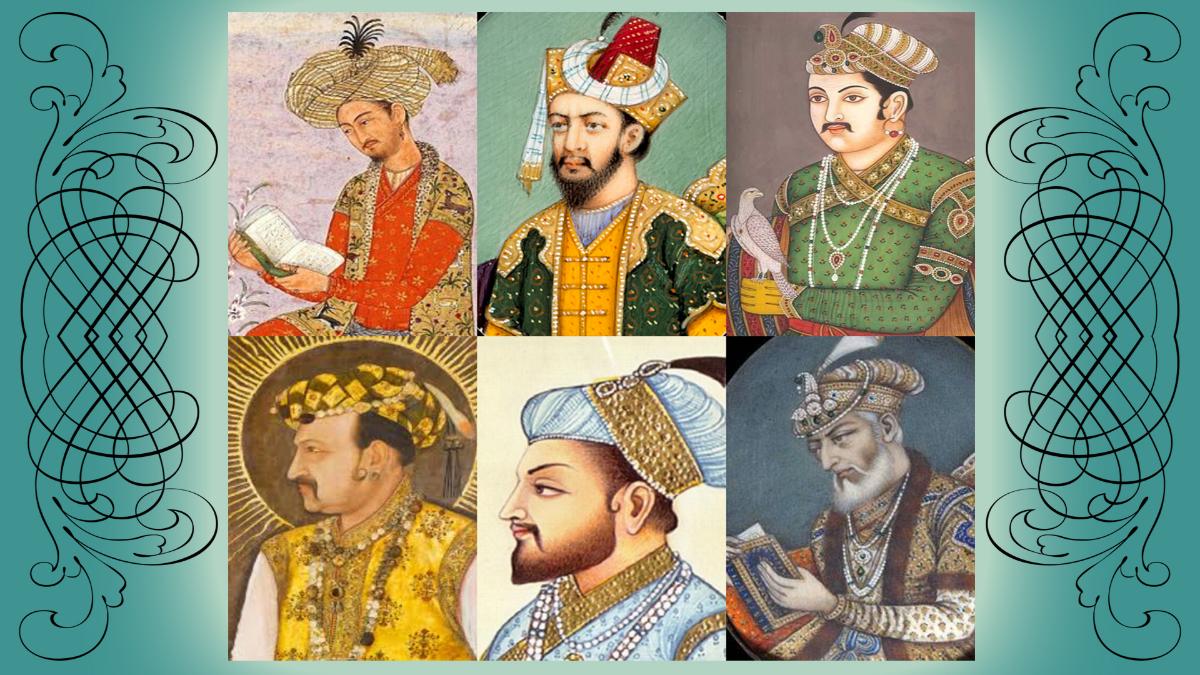
CAUSES OF THE FALL OF THE MUGHAL EMPIRE.
Weak and incompetent successors.
Wars of succession.
Aurangzeb’s Deccan, religious and Rajput policies.
Jagirdari crisis.
Growth of Marthas and other regional powers.
Foreign invasions of Nadir Shah (1739) and Abdali.
Central Administration
Akbar organised the central machinery of administration on the basis of the division of power between various departments and through checks and balances. The king was the head of all powers.
The wakil (deputy of the king) was stripped of all his powers after Bairam Khan's death.
Wazir: The Prime Minister
Diwan: His responsibilities were in three fields: Executive, Revenue and finance.
Mir Bakshi: He was the head of the military department, similar to that Ariz-i-mamalik, under Delhi Sultanate.
Mir Saman or Khan Saman: In charge of the royal households, like building roads, gardens etc.
Sadr-us-Sudur: In charge of religious matters, religious endowments and charities.
Chief Qazi: head of the Judiciary department after the king.
Braids: Intelligence Officers.
Mustaufi: Auditor-General.
Provincial Administration.
The Mughal Empire was divided into 12 Subas (provinces). After expansion of the empire, it became 15 during Akbar, 22 during Shahjahan and 21 during Aurangzeb.
Subedar Head of the provinces( Governor)
Provincial Diwan Dealt with finance, directly responsible to central diwan.
District or Sarka
Fauzdar Administrative head of the Sarkar.
Amil/Amalguzar Collecting revenues and patrolling the roads.
Kotwal Duty was to maintain law and order in sarkar besides, trial of criminal cases and regulations of prices.
Pargana or Taluka
Sikhdar Administrative head of the Pargana.
Amin/qanungo They were revenue officials.
Village or Gram
Lambardar Village Headmen.
Patwari Village Accountant.
Mansabdari System:
The Mansabdari system (1595-96) showed a noble's civil and military capacity. In its broad aspect, the mansab or rank awarded to an individual fixed both his status in the official hierarchy as well as his salary.
Twin ranks Zat and Sawar were allotted. The Zat indicated the noble's personal status and the Sewer rank, the actual number of horsemen he was expected to maintain.
Revenue Administration
The empire was divided into Khalisa (crown land), Jagirs (land granted to nobles) and i am or Madad-i-Maash or Suyurghal (land granted to religious and learned men).
Dahsala System of Raja Todermal: Under this system the average produce of different crops at the average prices prevailing over the last 10 years were calculated. 1/3rd of the average produce was the state's share. For the measurement of land, 'Bigha' was adopted as the standard unit.
Zabti System: was based on the measurement and assessment of land.
Methods of revenue collection:
-Raj Yield per unit area.
-Kankut Based on an estimate.
-Zabti Based on the yields of crops.
In this system, every Jagirdar was assigned land in proportion to his salary.
Ijara System: The Government began contracting the land with the middle man, also known as revenue farmers, who were supposed to pay fixed amount to the government, however, were left free to collect whatever they could, from the farmers leading to their exploitation.
Mughal Paintings:
The Mughals introduced new themes depicting the court, battle scenes and added new colours (peacock blue and Indian red.)
Daswant and Basawan were two famous painters of Akbar's court.
Mughal painting reached its zenith during Jahangir's rule. Jahangir was a great patron of painting.
